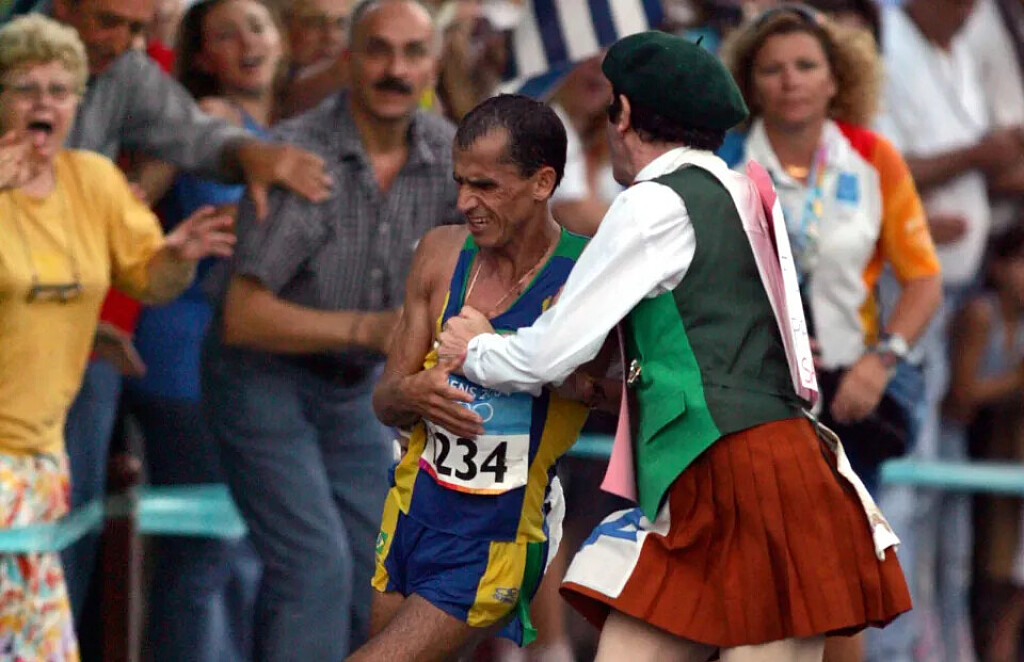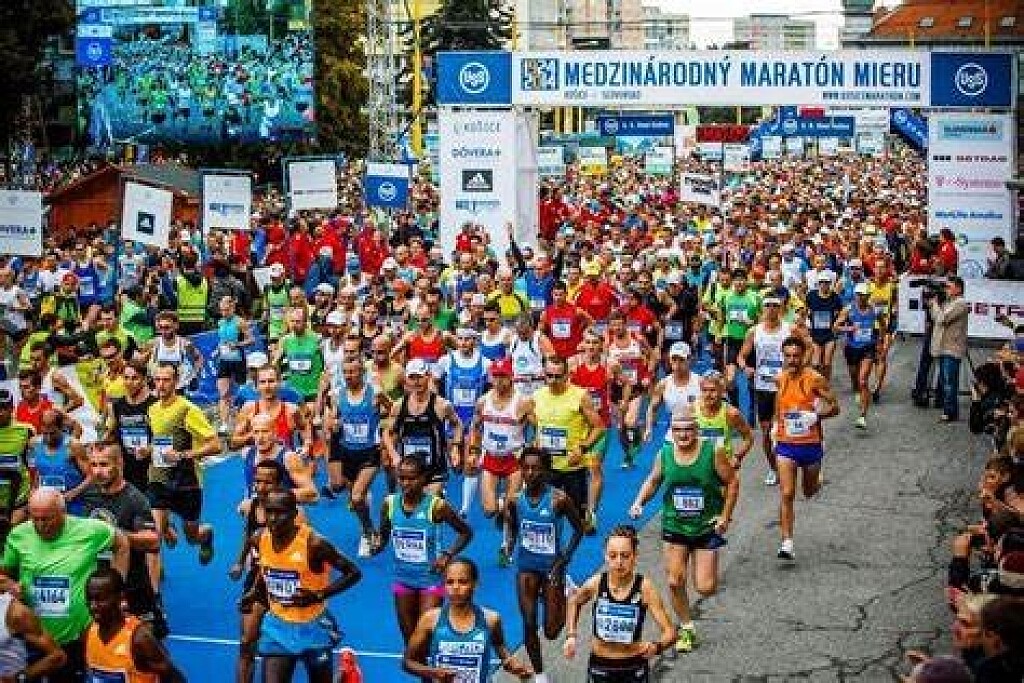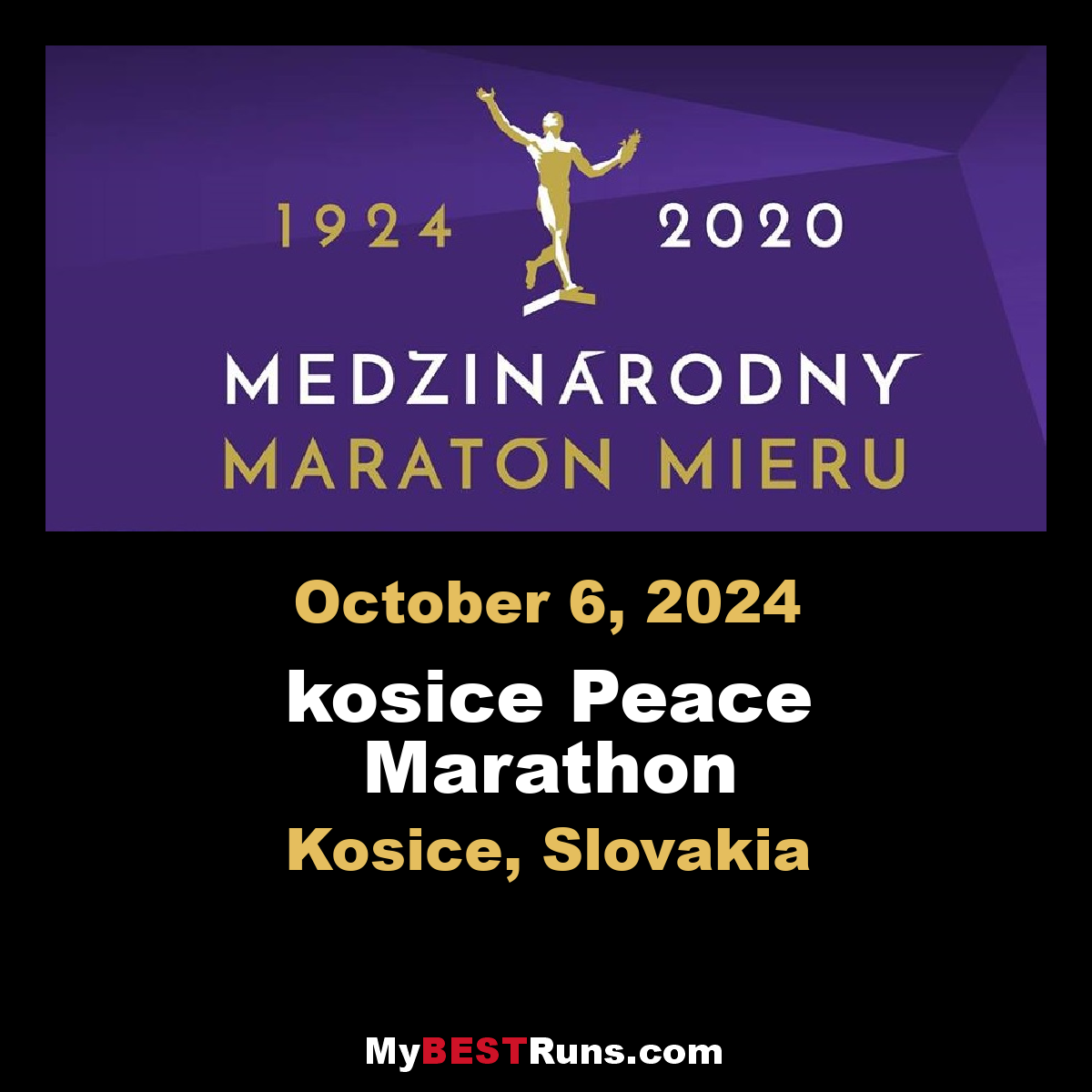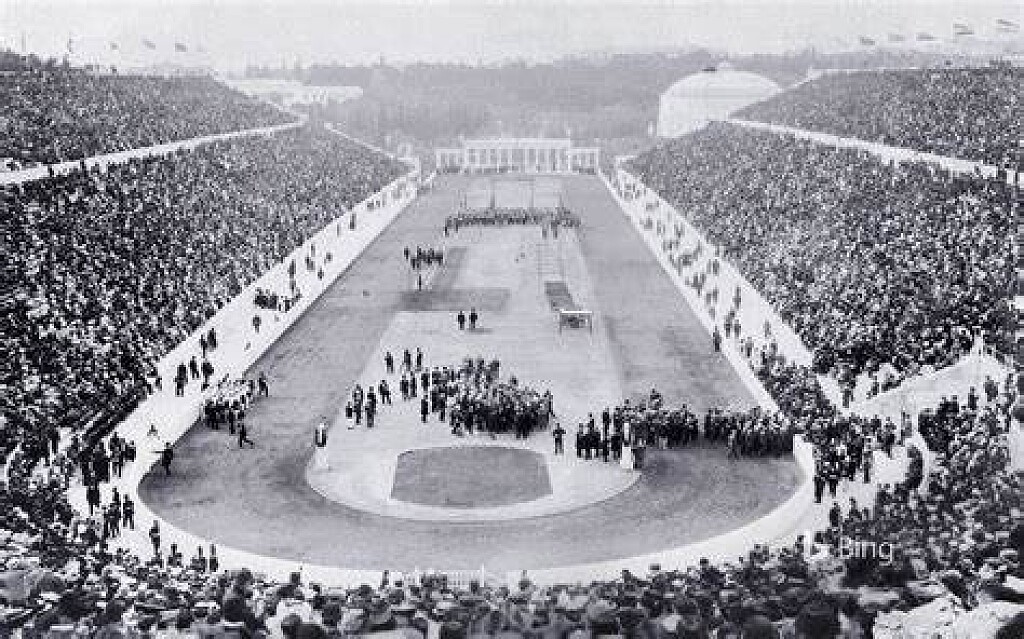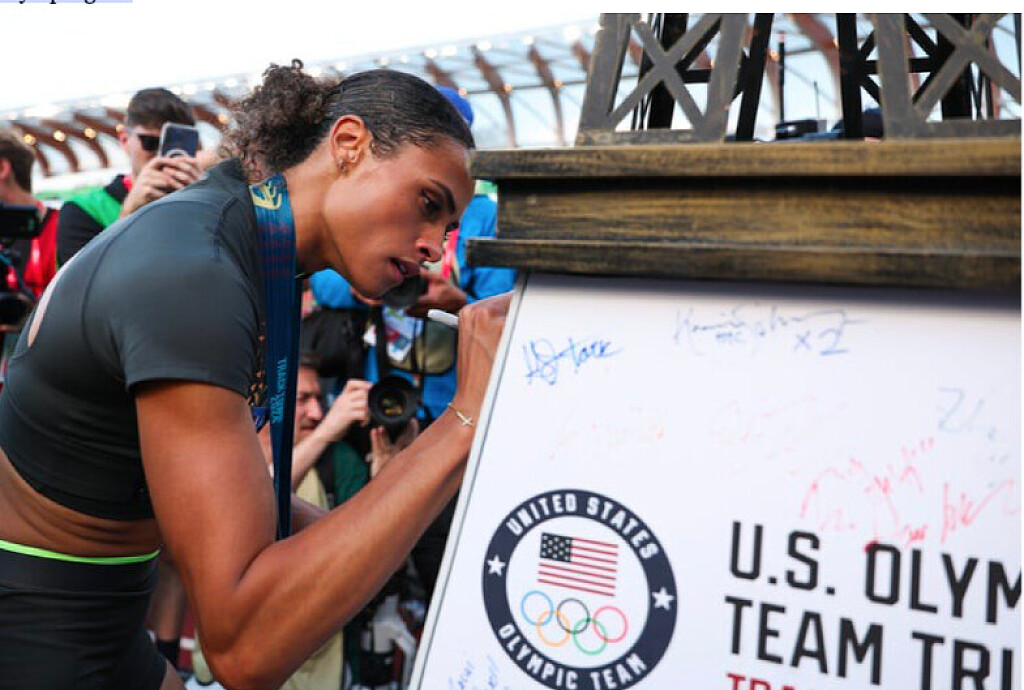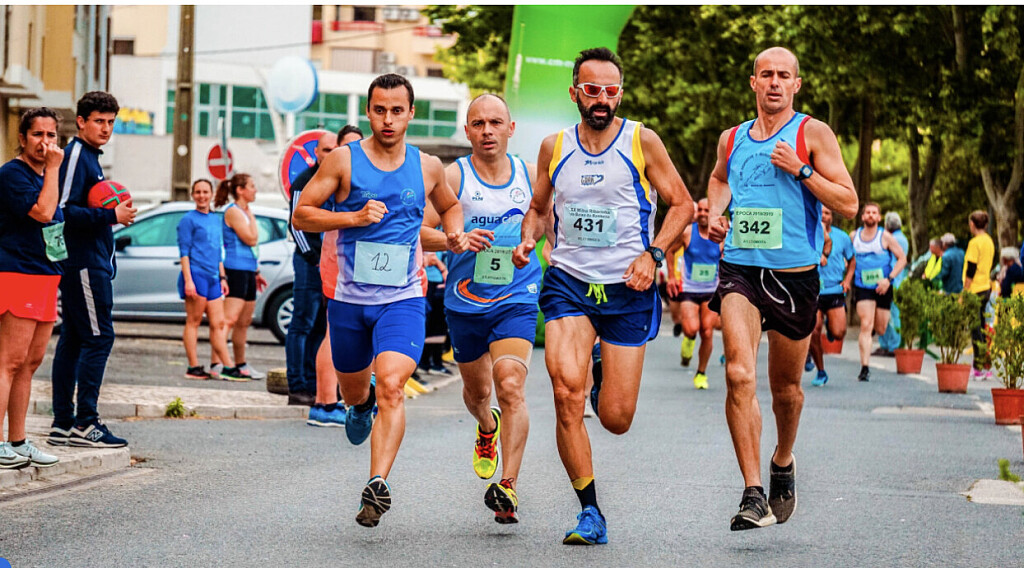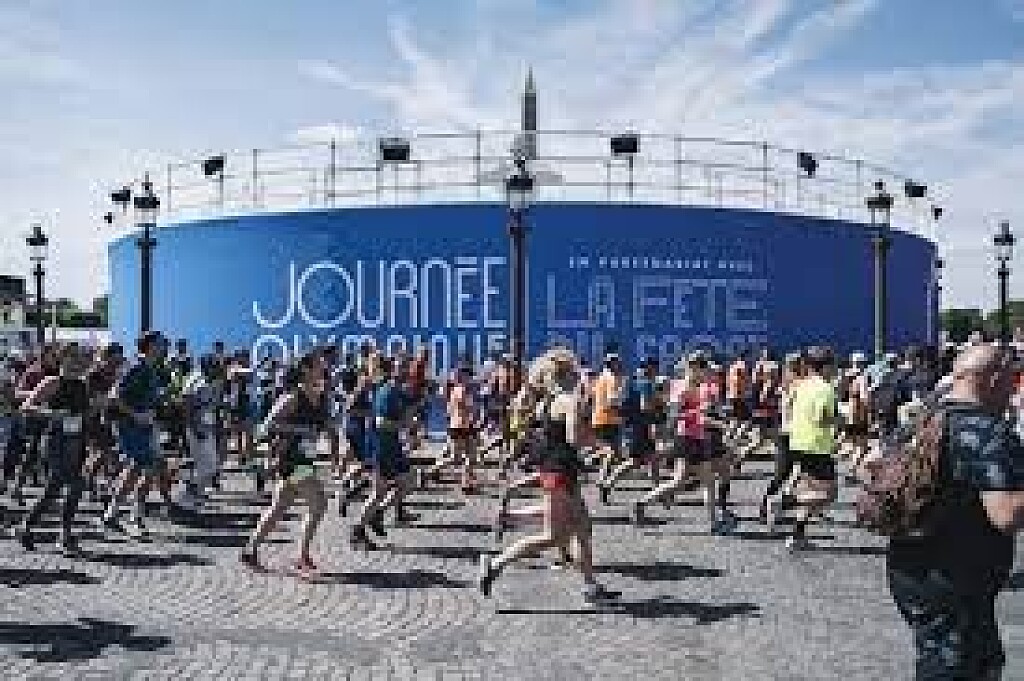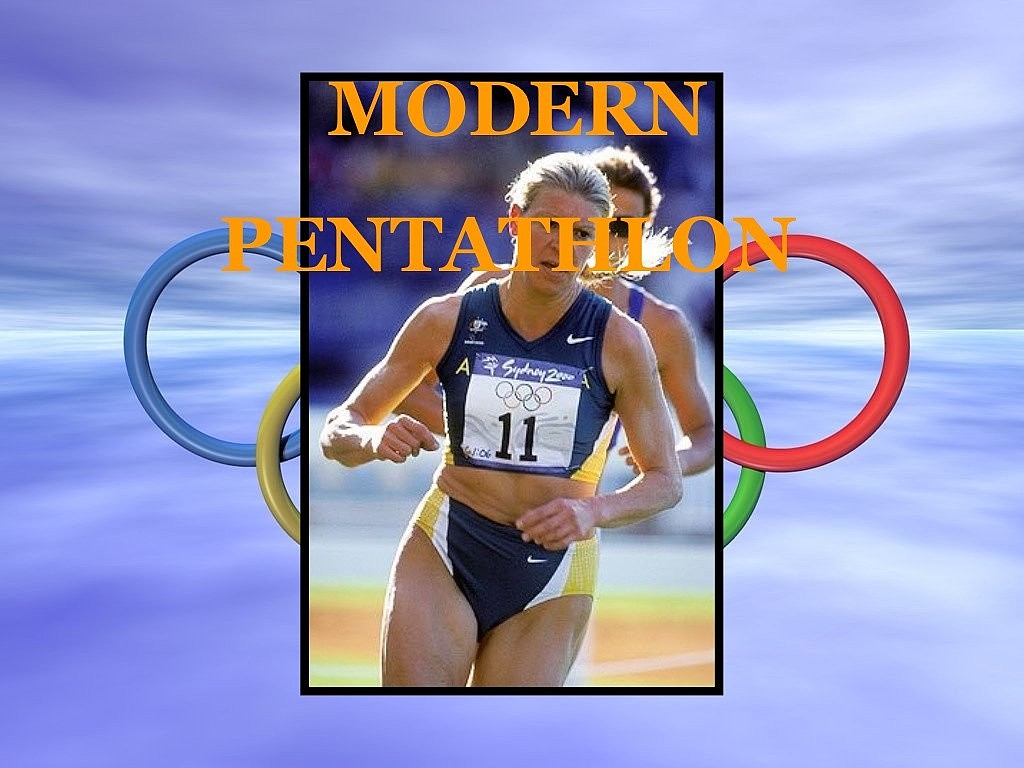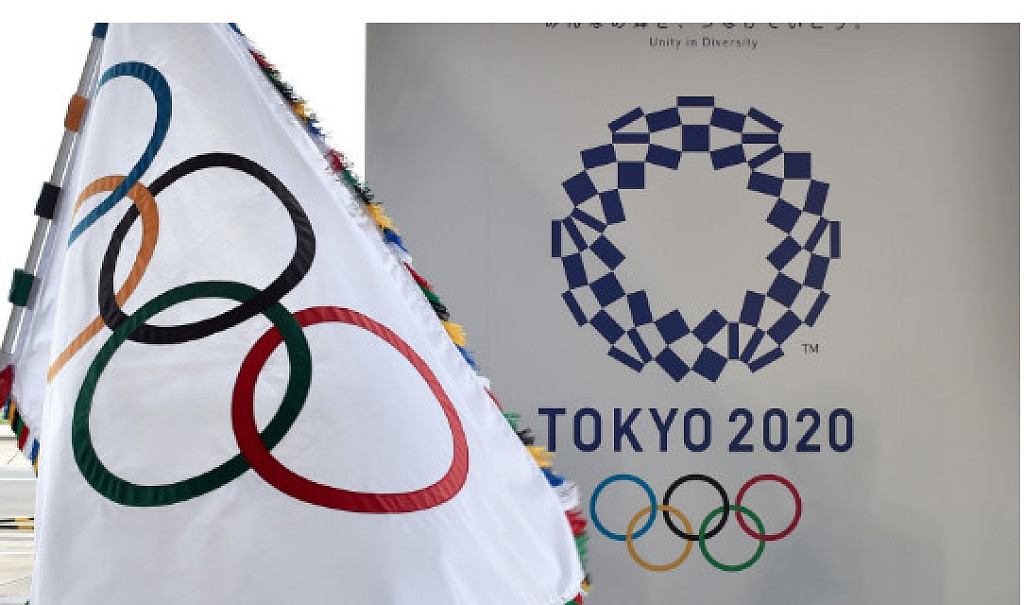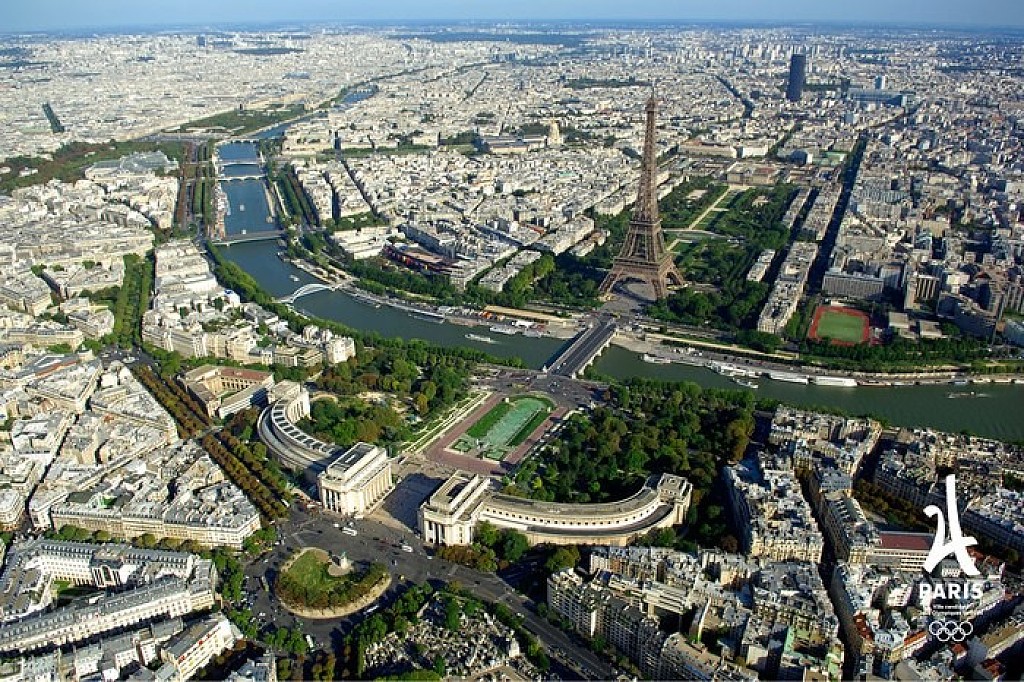Running News Daily
Running News Daily is edited by Bob Anderson. Send your news items to bob@mybestruns.com Advertising opportunities available. Train the Kenyan Way at KATA Kenya and Portugal owned and operated by Bob Anderson. Be sure to catch our movie A Long Run the movie KATA Running Camps and KATA Potato Farms - 31 now open in Kenya! https://kata.ke/
Index to Daily Posts · Sign Up For Updates · Run The World Feed
Articles tagged #Pierre de Coubertin
Today's Running News
The Champion Who Was Shoved Off Course but Won Our Hearts
He Lost Gold but Won the World’s Respect
In one of the most unforgettable moments in Olympic history, Brazil’s Vanderlei de Lima was on the brink of glory at the 2004 Athens Olympic Marathon—until a shocking intrusion changed everything.
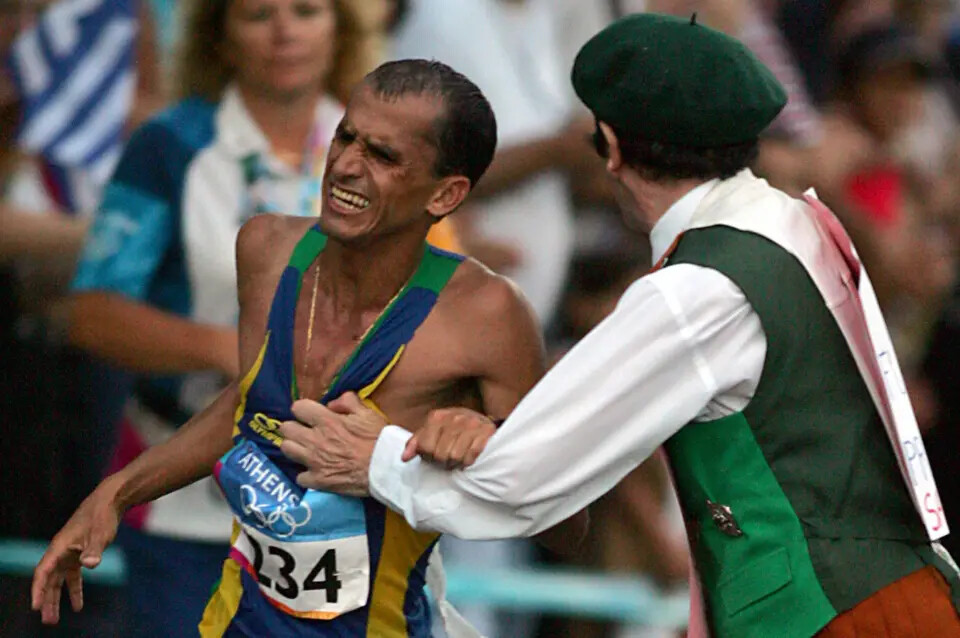
With just over four miles to go and a commanding 25-second lead, de Lima appeared destined to capture Brazil’s first-ever Olympic gold in the marathon. Then, without warning, a man leapt from the crowd and forcefully pushed him off the course.
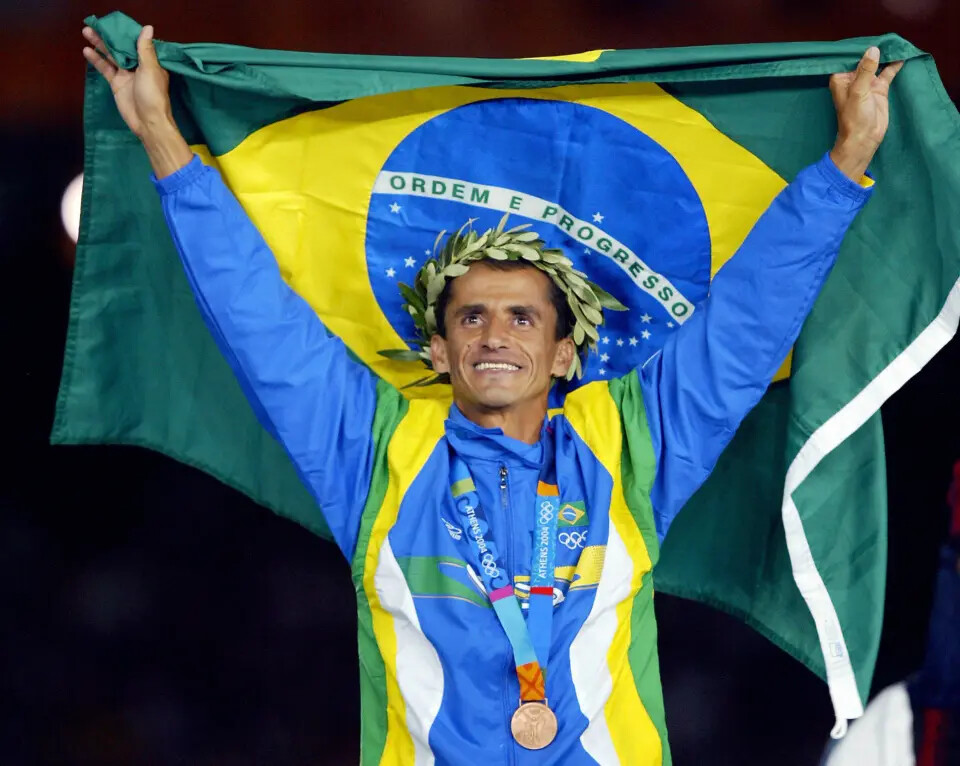
The assailant was later identified as Neil Horan, a former Irish priest already notorious for disrupting the 2003 British Grand Prix. Though a bystander quickly intervened to help free de Lima, the damage was done—his rhythm was broken, precious seconds were lost, and his chance at gold began slipping away.
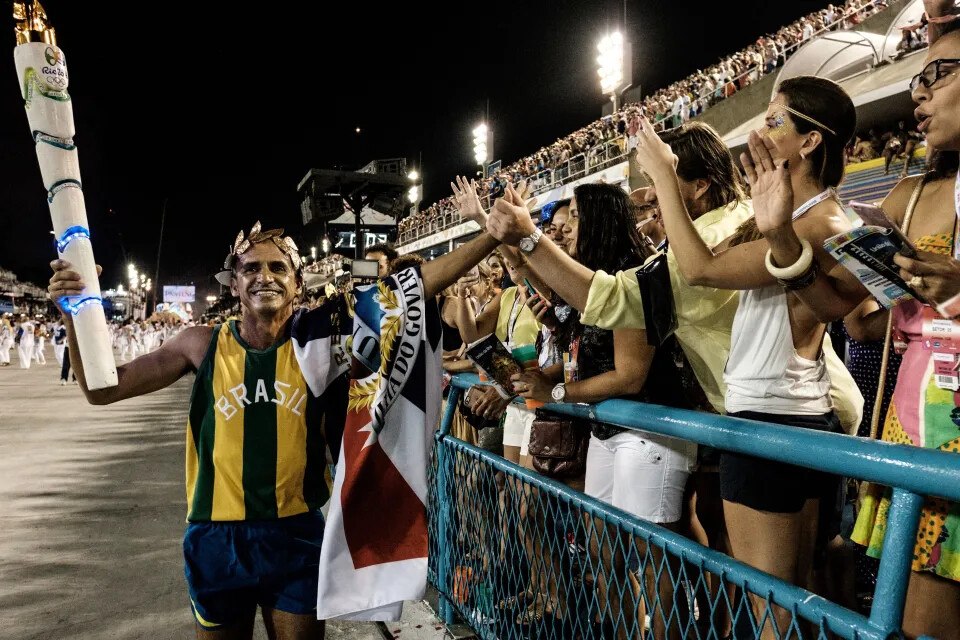
Still, de Lima didn’t stop.
He returned to the course, running with remarkable resolve and even smiling and waving to the crowd as he entered the stadium. He crossed the line in third place, claiming the bronze medal—but earning something even greater in the eyes of the world.
His grace under pressure became a symbol of true sportsmanship. For his extraordinary display of dignity, Vanderlei de Lima was later awarded the Pierre de Coubertin Medal, a rare honor given by the International Olympic Committee to those who embody the Olympic spirit.
Though he was robbed of a gold medal, de Lima’s legacy endures as a timeless reminder: sometimes the greatest victories are not measured by the color of the medal, but by the strength of the human spirit.
What Happened to Neil Horan?
The man who infamously shoved Vanderlei de Lima off course was identified as Neil Horan, a former Irish priest with a history of disrupting major sporting events. He had previously interfered with the 2003 British Grand Prix and was known for spreading extreme religious views.
For the Athens incident, Horan was arrested and later convicted, receiving a 12-month suspended sentence from Greek authorities. Though he didn’t serve jail time, he was globally condemned for robbing de Lima of a likely gold medal. Horan was defrocked by the Catholic Church in 2005 and has since appeared sporadically in the media, showing little remorse for his actions.
Vanderlei de Lima, meanwhile, earned something far more enduring: the world’s respect.
by Boris Baron
Login to leave a comment
Košice Peace Marathon’s origins from Paris Olympic Marathon in 1924
The Košice Peace Marathon returns to Paris after 100 years
The inspiring and authentic story of the founder of the Košice Peace Marathon (KPM), Vojtech Bukovsky, has captivated the world. In the venue of the 2024 Olympic Games in Paris, the Maison Slovaque – the Slovak Olympic House – hosted the ceremonial presentation of Europe’s oldest marathon.
Today in the Slovak Olympic House, the organisers of the KPM, representatives of the Marathon Club, the Slovak Olympic and Sports Committee and the City of Košice presented the history of the race’s creation. The breathtakingly inspiring story of Vojtech Bukovsky was told through the premiere of a documentary film dedicated to the 100th anniversary of the founding of the Košice Marathon.
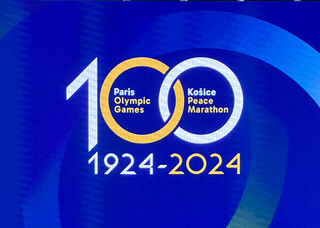
Among the invited guests were Mr. Christophe Najdovski, Vice Mayor of the City of Paris, Ms. Kirsty Coventry, Member of the Executive Committee of the International Olympic Committee and Minister of Sport of Zimbabwe, Mr. Dobromir Karamarinov, President of European Athletics, H.E. Ján Šoth, Ambassador of the Slovak Republic to France, and Mr. Jean-Michel Brun, Member of the Executive Board of the European Olympic Committee and Vice President of the French Olympic Committee.
“Over the weekend we will learn the names of the new Olympic winners in the marathon. We will pay tribute to them in the same way as Vojtech Bukovsky, the founder of the marathon in Košice, did here in Paris on 13 July 1924, when he stood up at the Colombes stadium to greet the Finnish runner Albin Stenroos and all his rivals in the finish line. 100 years have passed since then. We watch today’s battles under the Eiffel Tower with enthusiasm and are filled with pride that we can stand here and tell the story of the centenary of the marathon in Košice to the whole world. It is a story filled with courage, friendship, perseverance and the desire for peace and comfort. Vojtech Bukovsky was enchanted by the Paris Olympics 100 years ago and by the ideas of Baron Pierre de Coubertin. He said, among other things, that the most important thing in life is not to win, but to compete. And these words of his fully capture one of the basic philosophies of the modern marathon today. Let’s stay true to it,” said Branislav Koniar, Race Director of the Košice Peace Marathon.
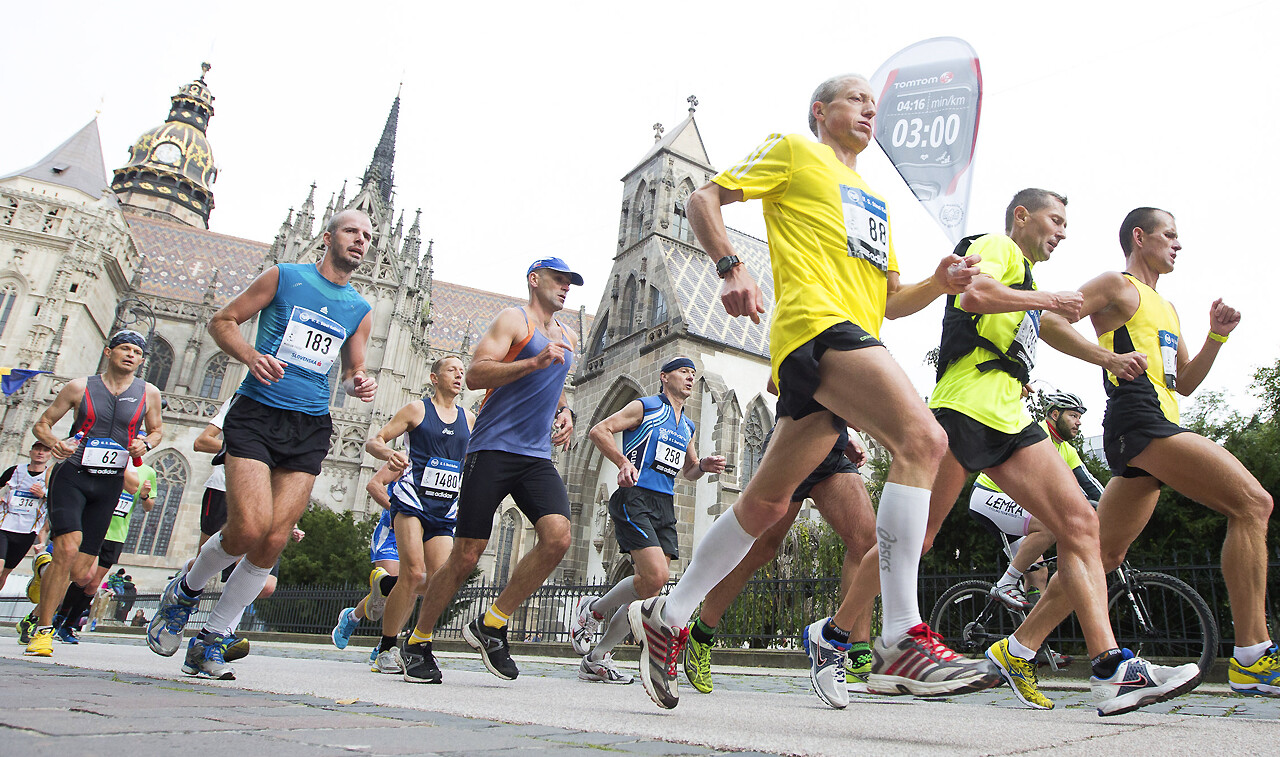
The metropolis of France and the Olympic ideals have a very special place in the birth certificate of the Košice Peace Marathon. The impulses leading to its creation are very stronglylinked to Paris, where, as today, the 1924 race was held under the five rings. The 30-year-old Vojtech Bukovský was also watching closely the competition that time. He came from Košice to experience this sporting event first-hand as a sports enthusiast, journalist and referee. When he applauded Albin Stenroos, the Finnish winner of the Olympic marathon, on 13 July, a dream was born in his mind, which he turned into reality just three months later.
“The Košice Peace Marathon marks an extraordinary milestone of its history. Inspired by the Olympic spirit of Paris 1924, it is a living example of the power of Olympic ideals to unite nations and celebrate peace through sport. At the Maison Slovaque, the Slovak Olympic House in Paris, we symbolically linked two historical moments. After 100 years, the story of one of the biggest and most important events in Slovak sport has once again returned to the city where the inspiration for its creation came from. Symbolically, it happened again at the time of the Olympic Games. This precious legacy reminds us that the Olympic Games are more than just a competition. They are an impulse that can inspire and change the world. We are proud at the Slovak Olympic and Sports Committee that the dream of one man inspired by the Olympic marathon continues today, uniting endurance athletes from around the world in the name of peace and understanding," said Slovak Olympic and Sports Committee Secretary General, Jozef Liba.
The courage with which Vojtech Bukovský set about organising the marathon is still an amazing act also on a global scale. Despite the fact that this sporting adventure did not come easily, today the marathon enjoys prestige and an important position on the world athletics map. In Košice, the tradition has become an event with a society-wide impact, representing the city and its inhabitants in a unique way. “The marathon is always a special event for us. And we, the citizens of Košice, are happy that runners from all over the world come back to us. But it is not for the records or the financial bonuses. They come for the people of Košice and the unrepeatable atmosphere. I also feel the need to recall the message of the Olympics, which is ekecheiria – that is, peace to arms, because the message of the Kosice Marathon is exactly that – peace. It is the strongest value for all of us, even in these times,” adds the Mayor of the City of Košice, Jaroslav Polaček. The City of Košice is one of the most important partners of the KPM, and it participates not only financially and organizationally, but also technically and personally in the preparations of the biggest sporting event.
The presentation of the KPM in Paris is the best invitation to the anniversary edition of the event. In addition to the sporting feats of elite runners, the performances of “mortals”, amateur or weekend runners, who sign up in their thousands for the Košice marathon course, will also resonate. This community has always been the soul of the KPM. “Millions of runners from all continents constantly confirm us that sport and marathon can unite people of every religion, every skin colour, every nationality. The strength of this community is unparalleled. And it gives strength to us in Košice. Without it, we would certainly not have been able to overcome the most diverse obstacles for 100 years. Let us wish that tomorrow’s marathon mission here in Paris will be a success for everyone – both for the medal winners and for those who finish later. It will certainly be the same on 6 October 2024 in Košice. Come to see it, come to experience it. You will be cordially welcome,” – concludes Ján Sudzina, the President of the Košice Marathon Club.Part of this commemorative meeting was also the presentation of miniaturized replicas of the statue of the marathoner, which has been a landmark of the city and the marathon itself since 1962. They will go to Paris City Hall and also to the International Olympic Committee and Europaen Athletics represented at this ceremony by President Dobromir Karamanirov.
And of course, there was talk of the actual Olympic marathon, which will become a hugely watched event on Saturday, 10th August. In addition to the best marathon runners, more than 20,000 runners from all over the world will take to the track in a unique project that has so far been unprecedented at the Games under five rings. The starting field of hobby runners will include those from Slovakia. Three of them have accepted the invitation from the Marathon Club and will personally take part in the ceremony. They are Milan Šimoník, Lukáš Jáchym and Marián Vidra. From the hands of Branislav Koniar and Jan Sudzina they have received symbolic starting numbers, with which they will take part in tomorrow’s marathon in Paris. They carry the logo and the message of the mutual relationship between the two cities, which was born from the enthusiasm of Vojtech Bukovsky 100 years ago.
Let us also add that two legendary athletes were also present at the ceremony. Kipchoge Keino of Kenya became the first African to win Olympic gold in track and field in Mexico City in 1968 and defended his title four years later in Munich. His compatriot Tegla Loroupe competed in Košice in 1997 and won a gold medal at the World Half Marathon Championships held in the city. After winning the world’s biggest marathons and retiring from her career, she became a special UN ambassador with the aim of putting together repeatedly a team of athletes made up of refugees who have had to leave their country for war or humanitarian reasons. Such a team is also starting this time at the Games in Paris.
by AIMS
Login to leave a comment
kosice Peace Marathon
The Kosice Peace Marathon is the oldest European marathon.This year for the organizers of Kosice Peace Marathon is also about memories and flashbacks. One of the fastest marathon courses has been created in Košice 20 years ago on that occasion it was the 1997 IAAF World Half Marathon Champioships. Tegla Loroupe and Shem Kororia were awarded from the hands of...
more...From Ancient Olympia to Paris 2024
Modern Olympic history is full of victories and defeats but along the way since the revival of the Olympics in 1896, we encountered geopolitics, a shift in women’s rights and the state of global affairs.
From Athens to Rio, in the last 125 years, the games have crossed five continents, added and removed events, resisted boycotts and were only canceled three times due to two World Wars.
In 1894, Pierre de Coubertin launched his plan to revive the Olympic Games, and in 1896 the first Games of the modern era were held in Athens
Origins of the Olympic Games
The history of the Games goes back around 3,000 years, to the Peloponnese in Ancient Greece. Sports contests organized at Olympia back then took place every four years and acquired the name Olympic Games.
The first written evidence of the official Games dates from 776 BC, when the Greeks began measuring time in Olympiads, or the duration between each edition of the Olympic Games.
The four-year interval between the Ancient Games editions was named an “Olympiad” and was used for dating purposes at the time: time was counted in Olympiads rather than years. They were held between August 6 and September 19 during a religious festival honoring Zeus.
The games were named after their location at Olympia, a sacred site located near the western coast of the Peloponnese peninsula in southern Greece.
The games included Chariot races – one of the oldest of Greek sports dated back to the Mycenean Period (1100 B.C) – consisting of 12 laps around a hippodrome (horse track) and 12 times in the opposite direction, with the length varying depending on where the event was held.
There was also kele (riders competing in horseback), footraces (running), wrestling, pentathlon – a five-event combination of long jump, running and wrestling – boxing, and lastly the pankration, which was a combined contest of boxing, wrestling and kicking.
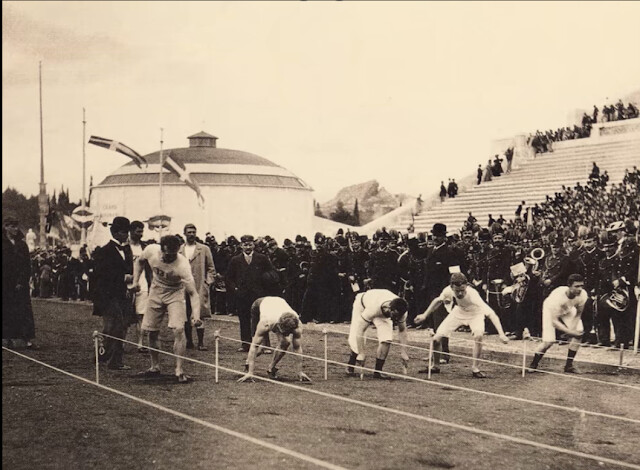
Structure and Traditions of the Ancient Olympics
All free male Greek citizens were entitled to participate in the ancient Olympic Games, regardless of their social status. Orsippos, a general from Megara; Polymnistor, a shepherd; Diagoras, a member of a royal family from Rhodes; Alexander I, son of Amyndas and King of Macedonia; and Democritus, a philosopher, were all participants in the Games.
Married women were not allowed to participate in, or to watch, the ancient Olympic Games. However, unmarried women could attend the competition, and the priestess of Demeter, goddess of fertility, was given a privileged position next to the Stadium altar.
One of the things that is commonly argued about is the question of whether there were amateur athletes in the ancient Olympic games. Ancient Olympic athletes were neither amateur nor professional. The word athlete is a Greek word that means “one who competes for a prize” and is related to two Greek words, athlos meaning contest and athlon meaning prize.
Greek athletes competed for prizes at athletic festivals. Some of the prizes were symbolic, for instance the wreath of olive leaves at Olympia, and others were material prizes worth money, for instance bronze tripods, or amphoras filled with olive oil. There were also cash awards of 500 drachmai (considered to be a fortune) or getting an early pension plan by receiving a free meal every day.
The Significance of Competition
For the ancient Greeks, whose fiercely independent city-states were often at war with one another, athletic contests became a unifying, peacemaking force. During the Olympic games, all hostilities were suspended. City-states sent their best athletes to compete
Decline of the Ancient Olympics
After thousands of years of the Greeks and Romans gathering at the Olympia to celebrate the festival in honor of Zeus, in 393 AD, the Christian emperor Theodosius I forbade the celebration of pagan cults, which included the Games.
Nonetheless, the popularity of sports contests and cultural festivities continued in many Greek-influenced provinces of the Roman empire as late as the 6th century AD.
Following Theodosius’ order, pagan cults began to disappear, and the site of Olympia was abandoned. Earthquakes destroyed the structures and their ruins disappeared gradually under the earth and sand.
Revival of the Olympic Spirit
There were no longer any visible traces of the site. Thanks to the writings of ancient historians, the memory of the Games and their place in the Greek world was not totally forgotten. The Games were known to have existed, but the knowledge of their exact location had been lost.
In 1776, the English traveler Richard Chandler discovered the site of ancient Olympia. The principal research digs were carried out a hundred years later by German archaeologists.
Pierre de Coubertin in re-establishing the Olympics

Pierre de Coubertin is widely recognized as the founder of the modern Olympic Games and the International Olympic Committee. Although artefacts suggested that ancient Olympia was prosperous, Coubertin was not put off and in 1894 invited athletes and sports people alike to attend a sports conference where he suggested the revival of the Olympics.
It was then decided on 23 June 1894 that a modern Olympic game should be held every four years and that each game should take place in a different country. It was unanimously agreed that the first modern Olympic games should be held in Olympia Greece.
Pierre de Coubertin was instrumental in establishing many of the Olympic traditions that continue to this day – the five rings, the Olympic flag, the oath and motto. He produced many writings about sport and education – one of his most famous quotes is “The important thing in the Olympic Games is not winning but taking part. Just as in life, the aim is not to conquer but to struggle well.”
The Modern Olympic Games
The International Olympic Committee (IOC) was founded on the initiative of Pierre de Coubertin on 23 June 1894, during the Olympic Congress.
At first Pierre de Coubertin planned to discuss amateur sport during the congress, however, by the time the invitations for the delegates to gather at the Sorbonne University in Paris were being sent, he changed both the programme and the title of the congress.
The event, which was eventually called the “Congress on the Revival of the Olympic Games”, served as an opportunity for de Coubertin to present his proposal to revive the Olympic Games. And thus, the International Olympic Committee was founded.
The 1894 Sorbonne congress was attended by 79 participants from 12 countries and its Opening ceremony featured musical pieces, songs, and poems.
First Modern Olympics (1896)
The first celebration of the modern Olympic Games took place in its ancient birthplace - Greece. The Games attracted athletes from 14 nations, with the largest delegations coming from Greece, Germany, France and Great Britain.
Due to its historical significance, the Greek hosts wanted to win the marathon above all else. Spyridon Louis set off from the city of Marathon and took the lead four kilometres from the finish line and, to the joy of the 100,000 spectators, won the race by more than seven minutes.
Hungarian swimmer Alfréd Hajós won the 100m and the 1200m events. For the longer race, the swimmers were transported by boat out to sea and left to swim the required distance back to shore. Hajós later confessed that his “will to live completely overcame [his] desire to win”.
On 6 April 1896, the American James Connolly won the triple jump to become the first Olympic champion in more than 1,500 years. He also finished second in the high jump and third in the long jump.
Evolution of the Games
The 1900 Summer Games in Paris took place from 14th May to 28th October and were held alongside the Exposition Universelle International which was staged to celebrate the achievements of the past century – the diesel engine (running on peanut oil), escalators, talking films and the telegraphone (the first magnetic audio recorder) were first displayed there.
Held as part of the Paris World’s Fair, the 1900 Games span five months, with 20 events and 24 countries represented. Because events are so spread out, many athletes and officials don't even realize they are competing in the Olympics.
But the 1900 Games introduce several new sports, including rugby, golf, cricket and croquet (the only year croquet is played), as well as equestrian events, archery and soccer. Swimming races take place in the Seine River and five sports—tennis, polo, soccer, rowing and tug of war—include athletes from differing nations playing on the same teams.
It’s also the first-time women participate, with 22 competing (along with 975 men). American Alvin Kraenzlein shines during the Paris Games when he takes gold in four track and field events.
Notable Olympic Events and Milestones
The Olympic flame, a symbol of peace and unity, was first introduced at the Berlin Games in 1936. The torch relay, which carries the flame from Olympia, Greece, to the host city, has become a cherished tradition. This relay not only symbolizes the connection between ancient and modern Games but also promotes the spirit of the Olympics across various nations
The concept of the Olympic Village was first realized during the 1924 Paris Games. This innovation provided a communal living space for athletes, enhancing the experience and fostering hospitality among competitors from around the world. The Village has since become a staple of the Olympic experience, allowing athletes to live and interact together during the Games
The Cold War era saw significant political tensions affecting the Olympics, leading to boycotts of the 1980 Moscow Games by the United States and the 1984 Los Angeles Games by the Soviet Union and its allies.
In response to various global challenges, including the COVID-19 pandemic, the Olympics have shown resilience by adapting their schedules and formats. The Tokyo 2020 Games were postponed to 2021, marking a significant moment in Olympic history as they navigated unprecedented circumstances while still aiming to uphold the Olympic spirit
A Symbol of Peace
As the world looks forward to future Olympic Games, including Paris 2024, we mustn’t forget that the Olympic Games have long served as a powerful symbol of peace, unity, and athletic excellence, transcending cultural and national boundaries. Their legacy is rooted in a philosophy that combines sport with education and cultural exchange, promoting values such as friendship, solidarity, and fair play.
by Juliana Alexandra
Login to leave a comment
Paris 2024 Olympic Games
For this historic event, the City of Light is thinking big! Visitors will be able to watch events at top sporting venues in Paris and the Paris region, as well as at emblematic monuments in the capital visited by several millions of tourists each year. The promise of exceptional moments to experience in an exceptional setting! A great way to...
more...8 Things You Need to Know About the Paris Olympics—Plus How to Watch
The biggest sport at the Paris Olympic Games will be held on August 1-11. And while it’s the oldest Olympic discipline, a lot will be new about track and field this year.
A lot has changed in the last 100 years. Feathers, jazz, and radios are out. Mom jeans, T-Swift, and TikTok are in.
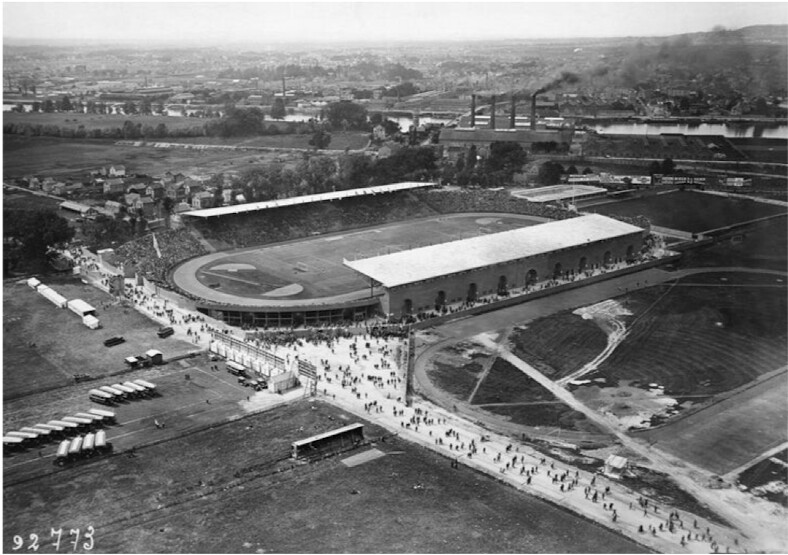
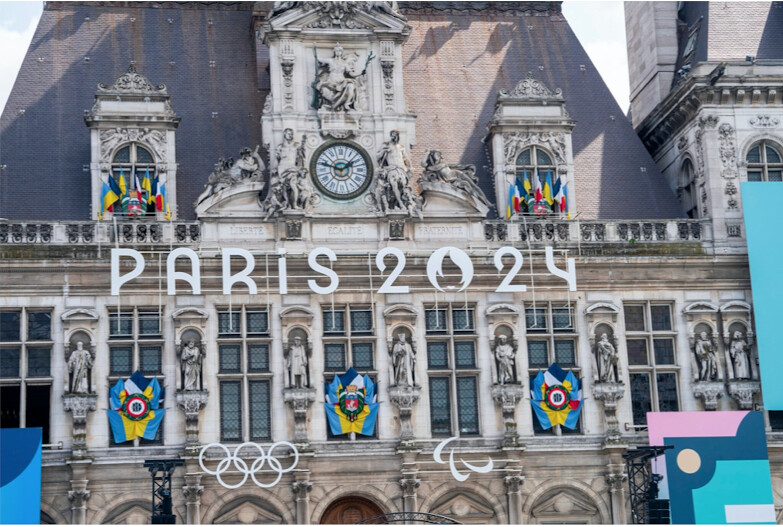
(We don’t make up the rules.)
Dirt tracks have been replaced by vibrant shades of bouncy mondo. Leather shoes cower next to featherlight carbon-plated spikes. Scouts sprinting along marathons, calling in the action by telephone to announcers projecting the information to spectators sitting in the stands, have been put out of business by helicopters and motorcades livestreaming the race on TV.
But one thing hasn’t changed: the 2024 Olympic Games will be held in Paris, France—where they were held for the last time exactly 100 years ago. And once again, track and field will be the star of the show.
(Sorry, break dancing and skateboarding.)
Here’s what you need to know about track and field, or what the rest of the world calls “athletics,” at the 2024 Paris Olympic Games on August 1-11.
Of the 10,000 athletes from 206 nations competing in 329 events at the Paris Olympic Games, 1,800 of them will be in the 48 events of track and field. That makes track and field by the numbers the biggest of the 32 sports.
It’s a fitting designation for a historic sport that traces its roots back to about 200 B.C. in Ancient Greece and the birth of the Olympics. Then, men (yes, just men) competed in sprints, the long jump, discus, and javelin to celebrate human potential and to honor the gods.
Those events are all still contended today (plus a whole lot more that would make the Ancient Greeks—and many of our contemporaries, for that matter—scratch their heads, like the 3,000-meter steeplechase and the 20K racewalk), giving special import to this sporting discipline.
In addition: unlike say, soccer or basketball, which have the Football World Cup and the NBA Finals, the Olympics represents the pinnacle of the sport for track and field. For all the disciplines within track and field, from the 100 meters, to hammer throw, to the decathlon, there is no higher honor than winning Olympic gold.
It’s been a long, arduous road since Pierre de Coubertin, founder of the modern Olympic Games in 1896, famously said that the point of the Olympics was “the solemn and periodic exaltation of male athleticism…with the applause of women as reward.”
At the 1900 Olympics, also in Paris, 22 women defied Coubertin’s dream and competed in a total of five events: croquet, equestrian, golf, sailing, and tennis. They made up a minuscule 2.2 percent of the 997-person field. This year, thanks to tireless work starting with the International Olympic Committee, the Paris Olympics will be the first to (basically) achieve gender parity.
Of the 329 medal events, 157 will be contested among men, five more than the 152 for women. (There are also 20 mixed-gender events, including the mixed-gender 4×400-meter relay on the track and the mixed-gender marathon race walk relay.) But within the 32 sports, 28 are gender equal—including, for the first time, track and field.
The devil is in the details, and if we’re putting true parity paramount then there’s still some work to go. Even within track and field, the men still compete in the decathlon (10 events) while the women compete in the heptathlon (seven). And then there’s everyone on the team beyond the athletes themselves: in Tokyo three years ago, 13 percent of coaches were women—and that’s up from 11 percent in Rio in 2016. A quarter of National Olympic Committees give less prize money to women gold medalists than men.
Speaking of prize money, track and field is breaking barriers this Olympics by becoming the first sport to give out prize money. Gold medalists in both women’s and men’s races will win $50,000, with relay teams splitting that pot four ways. In total, that’s $2.4 million that World Athletics will be coughing up to foot the bill, a sign of change for how the Olympics have bloomed from an exhibit of amateurism to full-blown commercialization.
Notably, this prize money is less than World Athletics hands out at the World Athletics Championships, which awarded gold medalists $70,000 in Budapest last summer. World Athletics intends to extend prize money to silver and bronze medalists at the 2028 Olympic Games in Los Angeles.
That prize money from World Athletics remains separate from prize money awarded by some national federations—including the U.S. Olympic and Paralympic Committee, which will award $37,500, $22,500, and $15,000 to Team USA gold, silver, and bronze medalists, respectively, in Paris.
Paris vowed to make this Olympics the greenest ever, building as little new infrastructure as possible and using the city’s iconic landmarks as venue backdrops instead. Rather than build dazzling new stadiums which quickly fall into disuse and disrepair after the Games—as we’ve seen at previous Olympics—Paris opted to revamp existing infrastructure, some of it dating back to the last Olympic Games here in 1924.
The Stade de Yves-du-Manoir, the main stadium of the 1924 games which hosted among other things track and field, has a new 1,000-seat grandstand and will host the field hockey events.
The pastel-colored high-rise apartments of the Olympic Village, where many athletes stay during the Games, add a splash of color to Seine-Saint-Denis, the poorest area not only in Paris, but the country. Water pumped from deep below the earth cool the apartments made from a mix of wood and concrete (although many delegations have requested AC units nonetheless) and the avenues outside are made from a permeable pavement composed of crushed seashells that cool the streets by allowing water stored underneath the ground to evaporate on hot days.
This initiative has also fast-tracked cleaning up the famously romantic and infamously gray city. Paris has built 250 new miles of bike lanes, continued to expand its Metro network, allegedly cleaned up the Seine, and planted 300,000 new trees.
Track and field will be held on France’s biggest stage, quite literally. Built for the 1998 Football World Cup, Stade de France seats more than 80,000, making it the largest stadium in France. It’s home to the French national football (soccer) and rugby teams as well as the country’s biggest concerts.
As you’ve probably seen by now, the track has been resurfaced to purple for the Games. The shade is reminiscent of lavender, a homage to both the creativity of the 2024 Olympics and to the ash-colored track at the 1924 Olympic Games across the city.
If you’ve watched track and field meets in the past, you may have been confused why some athletes names’ appear with a big “Q” or a little “q” on the scoreboard after the preliminary and semi-final rounds.
If that’s you, don’t stress. In the spirit of second chances, and well, simplicity, the Paris Games are doing away with this system (for the most part).
For the first time ever, individual track events ranging from the 200 meters to the 1500 meters (including hurdles races) will include a “repechage” round. Athletes in the preliminary round who do not automatically qualify for the semi-final will have an opportunity to race their way into the next round through this additional heat, the entomology of which comes from repêchage, or “second chance” in French.
Under this new format, events will have four rounds: preliminary, repechage, semi-final, and final. This guarantees that every athlete competing in the 100 through the 1500 will have the opportunity to race twice. The number of athletes who will advance out of the repechage to the semi-final varies depending on the event.
The repechage round replaces the former system, in which athletes advanced by running the fastest in their heats (Q), plus the next best getting in on time (q).
The 100 meters already has an additional round of preliminary heats, and the distance events (3,000-meter steeplechase, 5,000, and 10,000) require adequate time to recover, so these events will be conducted without the repechage round.
Expanding on the theme of gender equality at the Paris Olympics, the marathon route pays homage to a pivotal moment in women’s history during the French Revolution: the Women’s March on Versailles. The roughly 160 competitors in the men’s and women’s races (as well as the citizen’s race, Paris 2024 Marathon Pour Tous) will follow in the footsteps of roughly 7,000 Parisian women and men who marched from Paris to Versailles on October 5-6, 1789 to demand bread and arms. (It worked: King Louis XVI finally agreed to sign the Universal Declaration of the Rights of Man and Citizens that day.)
Just like those disgruntled Parisians 235 years ago, runners will start at Hôtel de Ville, the city hall in the center of Paris, and will make their way on foot to the Palace of Versailles about 12 miles to the west. Along the way, runners will pass through nine districts of the Île-de-France, against a backdrop of the City of Light’s most iconic landmarks, parks, and forests, including the Place de Concorde, Rue de Rivoli, Tuileries Garden, and, of course, the Louvre.
In addition to being steeped in history and splendor, the course will be particularly grueling for a road race: the middle section packs some kickers that add up to over 1,430 feet of climbing and descent, with a maximum grade of 13.5 percent. Throw in some heat and humidity and we’re in for two unpredictable, action-packed events.
You may be wondering why race walking, in which competitors basically try and cheat as much as possible without getting caught, is an Olympic discipline. We are, too. Just watching race walkers swing those hips along at 6-minute per mile paces seems injury-inducing. But hey, three-on-three basketball, badminton, and trampoline are in the Olympics, too, so who are we to judge.
But judging is in fact a critical component of sport. Race walking rules stipulate that competitors must keep one foot on the ground at all times, to the point where any loss of contact is not visible with the naked eye. In other words, the rules are basically begging athletes to cheat and run without getting away with it. In addition, the lead leg must remain straight until that leg passes under the body. Using just the naked eye, that is, no technology whatsoever, judges monitor competitors to try and uphold these regulations.
For the first time since the discipline became an Olympic event in 2000, race walking will provide gender-equal medal opportunities. There will be a men’s and women’s 20K race, as well as a marathon-distance mixed-gender relay, which will replace the men’s 50K.
In a highly unique format, the mixed-gender relay will see 25 teams of one man and one woman each. They’ll complete a marathon-distance race broken up into four 10K chunks, with each competitor racing twice (man, woman, man, woman).
Perhaps the greatest improvement from the 1924 Olympic Games is that we can watch it all without even being there. NBC Universal, the American multinational mass media and entertainment conglomerate that owns the media rights to the Olympics, is planning to air more than 7,000 hours of total coverage of the Paris Olympic Games. Track and field coverage will be broadcast on the NBC, USA, and E! TV networks and streamed on Peacock, NBCOlympics.com, NBC.com, NBC app, NBC Olympics app, and NBC Sports app.
The action kicks off with the men’s and women’s 20K race walk on August 1, and concludes with the women’s marathon on August 11. In between, enjoy a nine-day action-packed feast on the track at Stade de France. Find the full track and field schedule of events here and the full track and field viewing schedule here.
Morning viewing sessions on August 2-9 will commence at 4 A.M. ET, and medal events will be shown on NBC’s tape-delayed prime time broadcast. Don’t worry, you can watch them live, too! Peacock, the streaming service of the Olympics, will stream every sport and event.
Those willing to sacrifice some sleep can catch the men’s marathon coverage live beginning at 2 A.M. on August 10 on USA Network, Peacock, and the NBC Sports app, while the women’s marathon will be shown live beginning at 2 A.M. on August 11.
by Outside Online
Login to leave a comment
7 Steps You Should Follow To Become A Marathon Champion
Did you ever have the inkling or desire to run a race? Many people have been drawn towards joining races like a marathon because of their excitement and challenges. The nature of a marathon, a long-distance foot race, will test your physical abilities and your mental strategy.
The legend of the marathon comes from the Greek messenger, Pheidippides, who took part in the Battle of Marathon. The Greek messenger saw a Persian vessel changing course toward Athens to claim a false victory there.
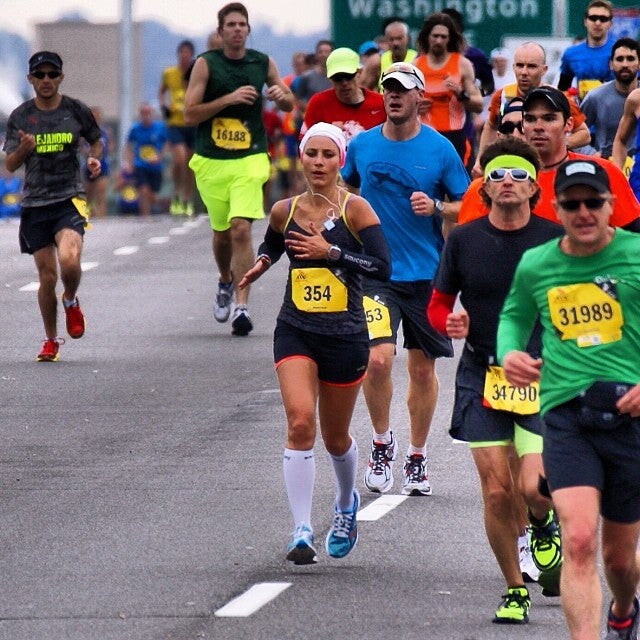
The vessel ran the entire distance to Athens without stopping, discarding their weapons and clothes to shed as much weight as possible. Upon their arrival, they formed an assembly and shouted, “we have won,” before collapsing and dying.
In modern times, the organizers of the 1896 Olympics wanted a popularizing event that would recall the glory of ancient Greece. The marathon race was proposed by Michel Breal and supported by Pierre de Coubertin, founder of the modern Olympics. An Olympic marathon was organized where Soyridon Louis first finished the male-only race in 2 hours, 58 minutes, and 50 seconds.
After the Olympic marathon was conducted, there was a marathon mania. Many people all around the world conduct their marathons in their localities. These allowed numerous runners to learn the excitement and challenges the marathon provides. It also enables them to note the steps runners need to follow and remember to become a marathon champion.

Drink Pre-Workout Supplements
Drinking pre-workout supplements is very critical for marathon runners. These supplements provide benefits that would enhance your chances of finishing marathons and, most importantly, winning them. They contain amino acids and vitamins designed to improve your training.
Looking at Pre-Workout Supplements Guide would help you choose what’s best fit for you, your health, and the marathon you’re running. Just ensure that the pre-workout supplement you’ll be drinking will:
Eat a Healthy Diet
You must always keep your health a top priority. A healthy diet through eating vegetables, fruits, and low-sugar and salt food provides you with more nutrients that your body needs to prepare for the marathon.
Hydration is also important. You must drink at least eight glasses of water daily to avoid dehydration. You don’t need any health emergency during training or the marathon, so keeping yourself hydrated throughout the process is essential.
Gear Up
Choosing the proper gear is critical. Wearing the right shoes prevents injuries and provides the proper support and stability during the run. Some might be pricey, but they’re worth it, especially because comfort is important when running a long race like a marathon.
You need to also remember the 20 degree rule. Check the temperature on the day of the marathon and then add 20 degrees to it. After that, decide on the clothing you need to wear based on that data.
Pace and Plan Training Session
One common mistake of runners who want to become marathon champions is trying to do too much too quickly. This process will burn them out, injure them, and cause them to lose their affection for running.
It’s why planning your training session in coordination with your pace is essential. Give yourself and your body the time to get used to the rigid training. It would also help you determine your fueling strategies – what energy gel you need or if you need more electrolyte drinks.
Mitigate Injury Risks
An injury is detrimental to all runners. Imagine training for weeks and months, and because of an injury, you can’t participate. It’s why you need to know how to stretch correctly early on. You’ll also need to listen to your body to approach the training process to avoid serious injuries.
Get Enough Sleep
When you lack sleep, you can’t provide your 100% because you don’t have the energy, stamina, and focus. You will not be able to properly train because there’s a high risk of you being hurt or injured since it affects your athletic performance.
If it’s possible, get at least seven to eight hours of sleep every day. Being well-rested helps you stay alert and energized during the training and the marathon.
Set Goals
It would be helpful for all runners to set a goal they want to achieve after your training sessions. You can set smaller goals at first so that you won’t pressure yourself to win the first race you compete in immediately. You can simply set that you must finish the race.
If you have achieved that, you can move on to bigger goals, like finishing in the top ten and then the top five. If you’ve achieved that as well, you can now set your sights on the championship since you’ve trained yourself well enough and did it in a way that would not put too much pressure on yourself.
Final Thoughts
Running a marathon takes a lot of process. It’s not a sprint where you can immediately run and achieve your goal. In a marathon, there are a lot of factors that you need to consider. It’s a step-by-step process. It takes a long time to achieve, but when you become a marathon champion, it will all be worth it.
Login to leave a comment
Paris 2024 amend routes for Olympic marathon
Paris 2024’s Board has approved amended routes for the marathon and cycling events at the Olympic Games.
Paris 2024 said the adjustments will allow for better-shared use of the existing sites, as well as providing an exceptional backdrop for competitions.
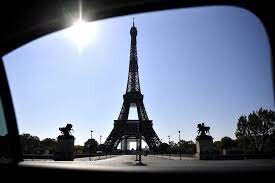
The marathon will start at the Hôtel de Ville, which has been the headquarters of the municipality of Paris since 1357.
The city hall was reconstructed back in 1892.
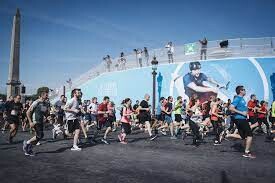
The Hôtel de Ville launched Paris 2024’s Olympic and Paralympic flag tour earlier this year and featured as part of Olympic Day celebrations.
The marathon will conclude at Les Invalides, the famous complex featuring museums and monuments.
Les Invalides is already serving as the archery venue for the Games.
Paris 2024 also confirmed the road cycling time trial will begin from Les Invalides and will conclude at Pont Alexandre III.
The bridge connects the Champs-Élysées and the Eiffel Tower.
Pont Alexandre III is also a location featured on the marathon swimming and triathlon routes.
Les Invalides, Pont Alexandre III and the forecourt of the Hôtel de Ville have been included on the route for the cycling road races.
The Pont d’Iéna and Trocadéro will also feature.
Pont d’Iéna, at the foot of the Eiffel Tower, will serve as the start and finish for the cycling road race and race walks.
The Paris 2024 Board has also changed the goalball location for the Paralympic Games.
Goalball competition had initially been scheduled to take place at the Pierre de Coubertin Stadium.
The venue will now move to Arena Paris Sud hall six at the Porte de Versailles.
Boccia and Para table tennis are also due to be held at the Porte de Versailles.
by Michael Pavitt
Login to leave a comment
Modern pentathlon set for new format for Paris 2024 Olympics
The Executive Board of the International Modern Pentathlon Union (UIPM) has approved a new format for the Paris 2024 Olympics, which will now feature a 90-minute event.
This 90-minute modern pentathlon will have an elimination system designed to reduce the overall length of the competition and create a more dynamic approach to the sport.
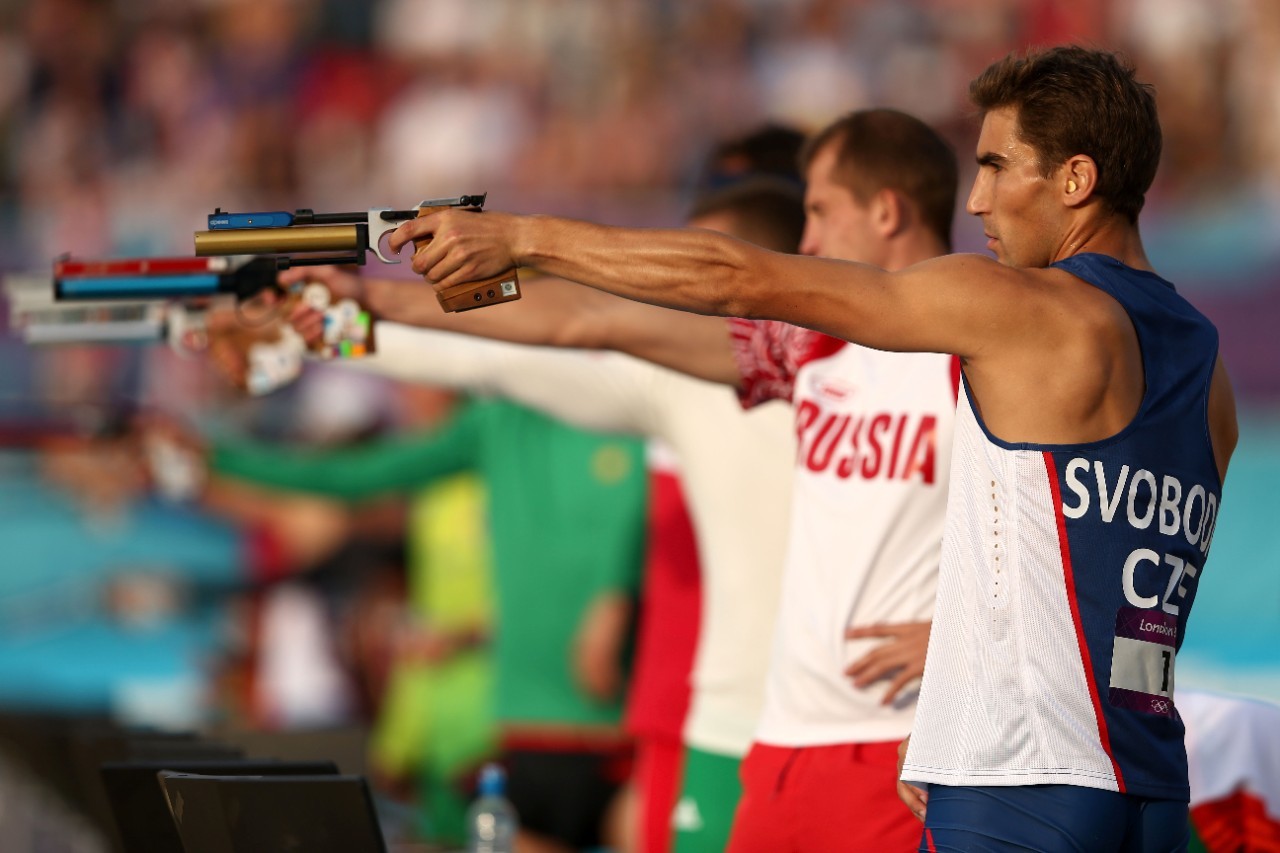
All five disciplines will take place in 90 minutes within a compact field of play.
Equestrian would feature first for 20 minutes, before a 15-minute fencing event, ten minutes of swimming and 15 minutes of the laser run.
Breaks are accounted for in between events too.
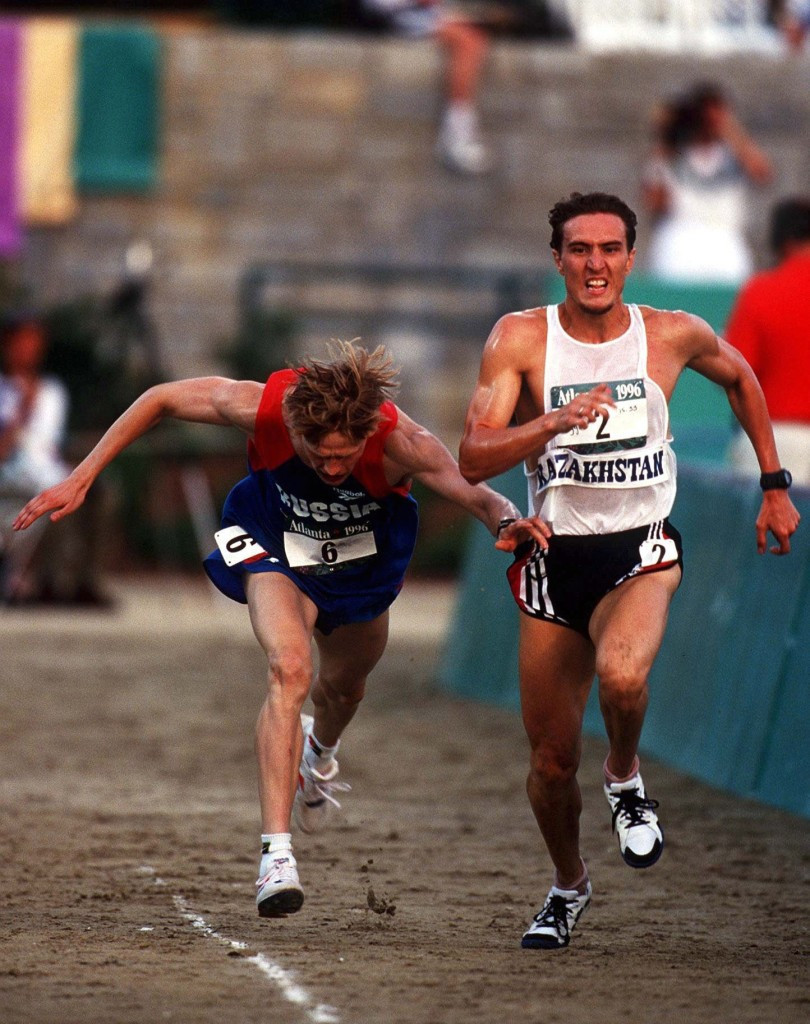
This new format also intends to be more broadcast-friendly, making it easier for viewers and spectators to understand the event in one sitting.
There is also a focus on making the Games more sustainable and efficient in future, making it compatible with the International Olympic Committee's (IOC) Olympic Agenda 2020.
Modern pentathlon was first introduced into the Olympic Games in 1912 in Stockholm by the co-founder of the IOC, Pierre de Coubertin.
Now, the IOC Executive Board will decide on December 7 whether to approve this new format proposed by the UIPM, as well as a proposal to add the mixed relay as an event for Paris 2024 too.
"We stand once again on the brink of a momentous landmark in the long history of our beloved core Olympic sport," said UIPM President Klaus Schormann.
"The modern pentathlon was originally a five-day competition at the Olympic Games.
"In Atlanta 1996 it was condensed into one day, and in London 2012 we combined laser shooting with running to produce a more exciting climax.
"At Tokyo 2020 we will have all five disciplines within one pentathlon stadium.
"Now, after two years of detailed exploration and discussion between all parts of our community, the IOC and Paris 2024 and Olympic Broadcast Services, we are ready to present something very special: a modern pentathlon lasting 90 minutes.
"We have presented our global community with a summary of the exciting new Modern Pentathlon format, which we hope will have a transformative effect on the profile and popularity of our Olympic sport.
"As UIPM President I am grateful to all parts of our global community for buying into this vision.
"The UIPM Executive Board has again demonstrated its commitment to innovation and we greatly look forward to presenting the IOC with our application for a new modern pentathlon competition format and an additional mixed relay category for the Paris 2024 Olympics."
The UIPM Executive Board made this decision following a vote in January in support of the format.
In September 2020, test events took place in Budapest in Hungary and Cairo in Egypt and received positive feedback.
by Michael Houston
Login to leave a comment
Original Coubertin drawing of Olympic rings sells for €185,000 ($216,000US) at auction
An original drawing of the Olympic rings sketched by Baron Pierre de Coubertin sold for €185,000 (£169,000/$216,000) at an auction in Cannes today.
That was €85,000 (£77,000/$99,000) above the estimate experts predicted it would fetch.
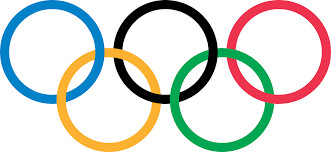
The figure included the 27 per cent commission fee of €234,950 (£214,032/$275,479).
"The drawing was sold to a Brazilian collector," Alexander Debussy, associate director of Cannes Auction House, said.
Last December, the manifesto drawn up by Coubertin which led to the revival of the Olympic Games sold for a record $8,806,500 (£6,764,543/€7,916,191) at an auction in New York City.
The founder of the modern Olympics created the five interlocking rings in 1913 in blue, yellow, black, green and red on a white field.
It is believed he intended the rings to represent the five continents of Africa, Americas, Asia, Europe and Oceania.
He claimed the colours of the rings together with the white of the background included the colours composing every competing nation's flag at the time.
In a survey published earlier this year the Olympic rings were voted among the top 10 most recognisable logo or symbol of all-time.
Coubertin introduced the rings in the August 1913 edition of Olympic Review.
His original drawing is in graphite and gouache on a 21x27.5 centimetre piece of white card, which he has autographed.
The new Olympic symbol and flag were officially approved at the International Olympic Committee (IOC) Congress at the Sorbonne University on June 15 in 1914, held to mark the 20th anniversary of the decision to revive the Games and the formation of the Olympic Movement.
But the shadow of World War One hanging over the world meant the rings and flag did not appear at an Olympic Games until the Opening Ceremony of Antwerp in 1920.
Cannes Auction House had put a reserve of €50,000 (£45,000/$57,000) on the item – which was from a private Swiss collection – but estimated bidding would reach between €80,000 (£73,000/$91,000) and €100,000 (£91,000/$114,000).
The 5,000-word handwritten manifesto sold in New York City was purchased by Russian billionaire Alisher Usmanov, the President of the International Fencing Federation.
In February it was announced that he had donated the document to the Olympic Museum.
Login to leave a comment
The 2024 Paris Olympic Games organizers announced today that they will stage a mass participation marathon on the same day as the elite event
Paris was wondering how to make sure the general public would care about the Olympic Games. On Thursday, the 2024 organizing committee unveiled its revolutionary solution to the people: let them participat in the Olympic marathon.
Paris 2024 organizers said Thursday they will stage a mass participation marathon on the same day as the elite event “on the same course and in the same conditions as the Olympic athletes,” the organizing committee said.
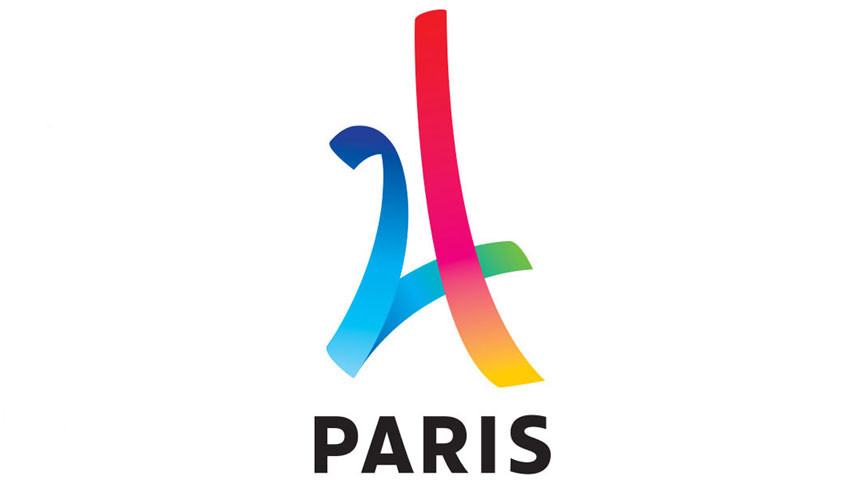
Their website describes their overall vision: Paris 2024 will see a new vision of Olympism in action, delivered in a unique spirit of international celebration.
We will offer one of the world’s most inspirational cities as a memorable stage for the athletes – and a truly global platform to promote them, and their incredible stories.
And we will partner with the entire Olympic family to demonstrate that, more than ever after an extremely challenging period, sport has a unique power to help create a better world.
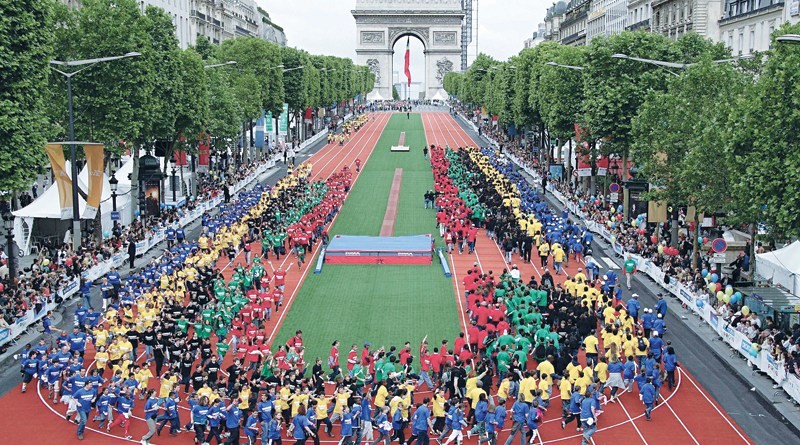
Our plan features 95 per cent existing or temporary venues, and every single one has a clear, defined legacy aligned with the city’s long-term development plans.
The sporting celebration will flow along the Seine, from the new Olympic Village, just 15 minutes from Paris city centre, to such city centre landmarks as the Eiffel Tower and the Grand Palais.
Paris has welcomed people from all over the world – including the founding fathers of the Olympic Movement – for hundreds of years, to collaborate and inspire each other; to shape ideas and forge the future.
In 2024, we will stage magnificent and meaningful Games that will set a new milestone in sporting history, in the city where Pierre de Coubertin first imagined the potential of a world united by sport.
Login to leave a comment
Paris 2024 Olympic Games
For this historic event, the City of Light is thinking big! Visitors will be able to watch events at top sporting venues in Paris and the Paris region, as well as at emblematic monuments in the capital visited by several millions of tourists each year. The promise of exceptional moments to experience in an exceptional setting! A great way to...
more...

